I'm having trouble setting the Content-Type on HttpClient. I followed along this question: How do you set the Content-Type header for an HttpClient request? But still no luck.
String rcString = JsonConvert.SerializeObject(new RoadsmartChecks() { userguid = user_guid, coords = coordinates, radius = (radius * 100) + "" }, ROADSMART_JSON_FORMAT, JSONNET_SETTINGS);
HttpClient c = new HttpClient();
c.BaseAddress = new Uri(BASE_URL);
c.DefaultRequestHeaders.TryAddWithoutValidation("Content-Type", "application/json"); //Keeps returning false
c.DefaultRequestHeaders.TryAddWithoutValidation("Authorization", hash_aes);
c.DefaultRequestHeaders.TryAddWithoutValidation("Roadsmart-app", Constant.APP_ID);
c.DefaultRequestHeaders.TryAddWithoutValidation("Roadsmart-user", user_guid);
c.DefaultRequestHeaders.Accept.Add(new MediaTypeWithQualityHeaderValue("application/json"));
HttpRequestMessage req = new HttpRequestMessage(HttpMethod.Post, BASE_URL + URL_CHECKS + "/fetch");
req.Content = new StringContent(rcString);
await c.SendAsync(req).ContinueWith(respTask =>
{
Debug.WriteLine("Response: {0}", respTask.Result);
});
 I also tried by using the Flurl library, but it crashes when trying to add the 'Content-Type'.
I also tried by using the Flurl library, but it crashes when trying to add the 'Content-Type'.
misused header name content-type
So how can I force it so it really adds it? Thanks in advance.